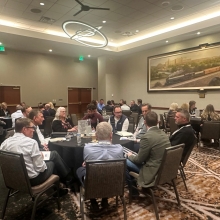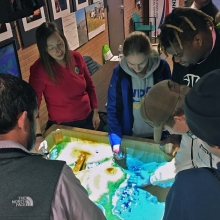3 tips to building a disability-inclusive workplace
How to fill workforce gaps by creating a disability-inclusive workplace
More people with disabilities have a two-year degree and are looking for work than those without a disability. How can you include workers with disabilities in your workforce strategy? Recently, the Minnesota Chamber kicked off its Workforce Solutions Series with a virtual event featuring strategies from experts on how building an inclusive workplace can help your business meet your recruitment needs and provide meaningful, fulfilling employment.
Interested in learning more?
1. Learn to move beyond potential stereotypes or a one-size-fits-all approach
"As I talked about the various types of disabilities, and just people in general, they're not one-dimensional groups. So you can't take and bucket everybody together and take a one-size-fits-all type of strategy approach. The other thing I think that people by essence and maybe this is by compassion, sometimes by ignorance, they think that people with disabilities are always dependent and always need help. That's not always the case. You've got to get past those types of things because partially your stereotypes of myth can build barriers up to your thought about your approach to this category and how you can be very open and inclusive when integrating people's vulnerabilities into your work groups and force."

Eric Black, President and CEO, MDI
2. Be proactive in creating strategic partnerships
"Reaching out to potential partners within the community. So that could be schools. It could be non-profits, it could be other community-based organizations. I always try to reach out have an introduction call, kind of talk about our company, what we do, the types of positions we fill and then learn more about their organization and just kind of explore what they're doing currently, their plans for the future, and then just any potential partnerships that could exist there. Then I always invite them in for a tour. Even if there isn't an immediate, recruiting pipeline there, it's always good to just get individuals in the community in our facilities."

Johnathan Milks, Director of Human Resources, Mikros Engineering
3. Most workers don't need special accommodations
"Most workers don't necessarily need special accommodations. Those that do, those accommodation costs end up being fairly inexpensive, generally most are under that $500 range. So that's something that we [DEED] do a lot of consultation and provide support to businesses around accommodation requests and working through some of those and supporting businesses to do that."

Amanda Jensen-Stahl, Manager of Interagency Partnerships and Business Engagement, Vocational Rehabilitation Services, Minnesota Department of Employment and Economic Development



